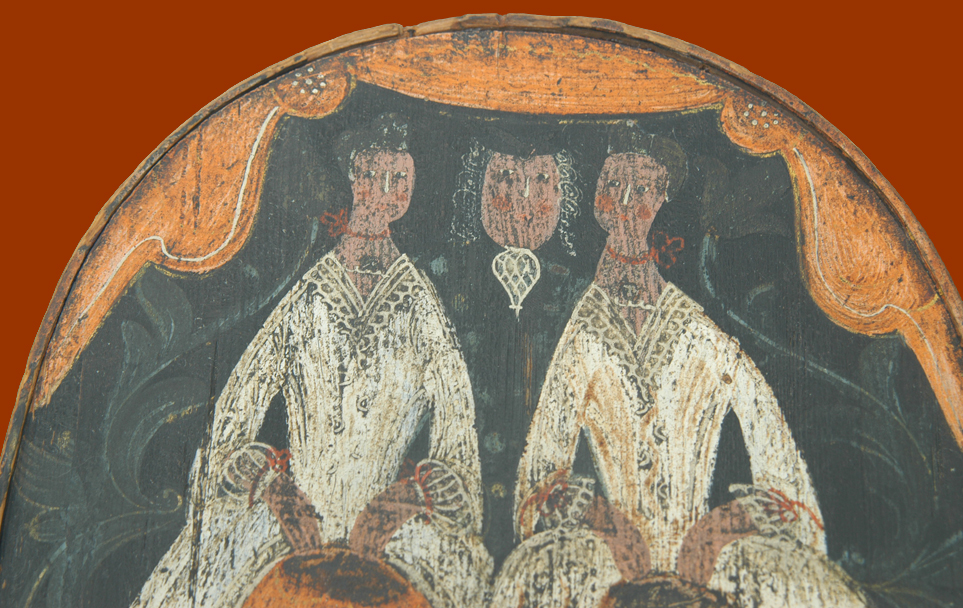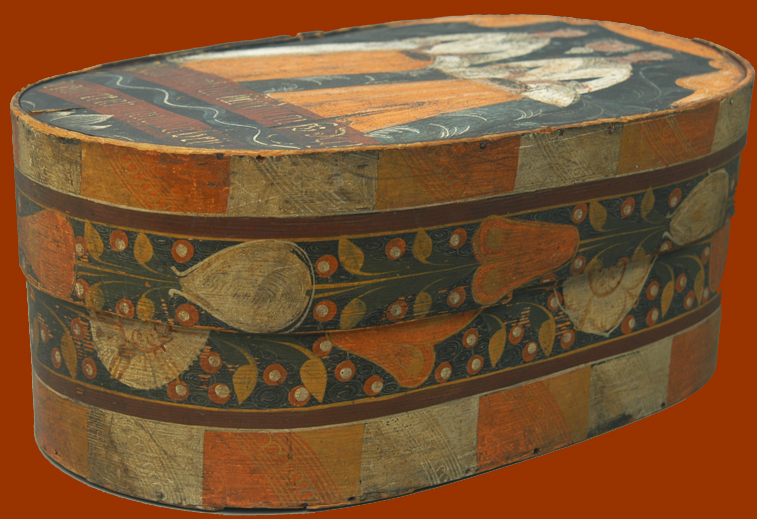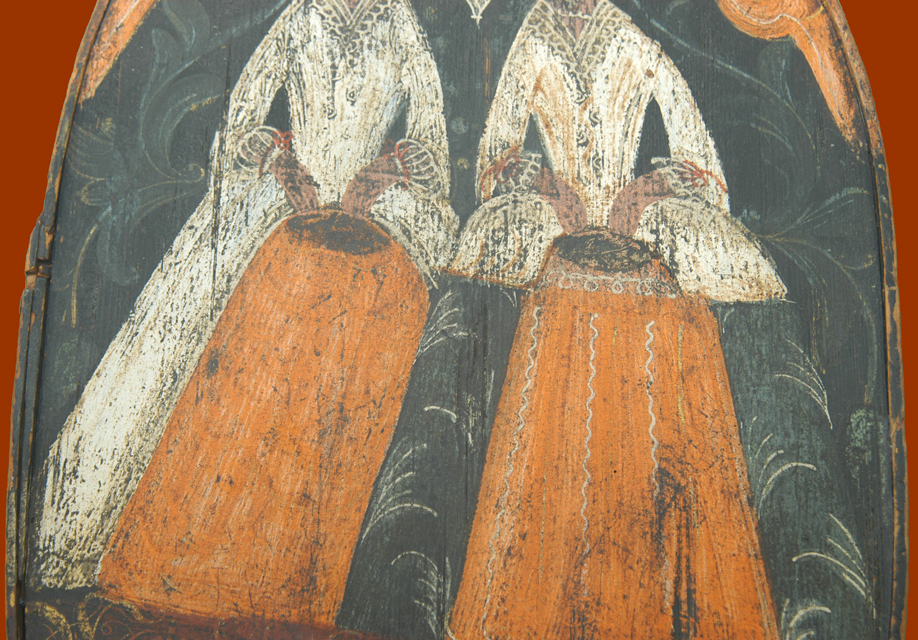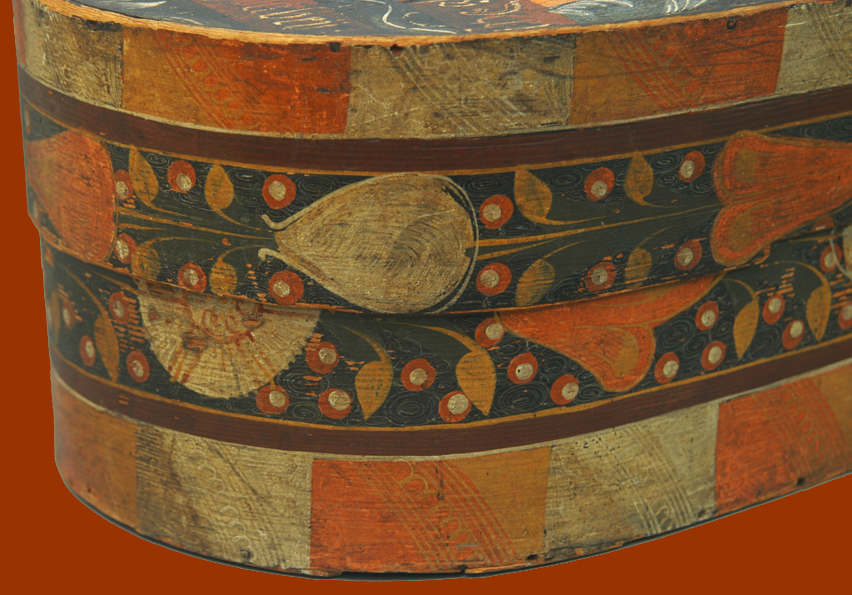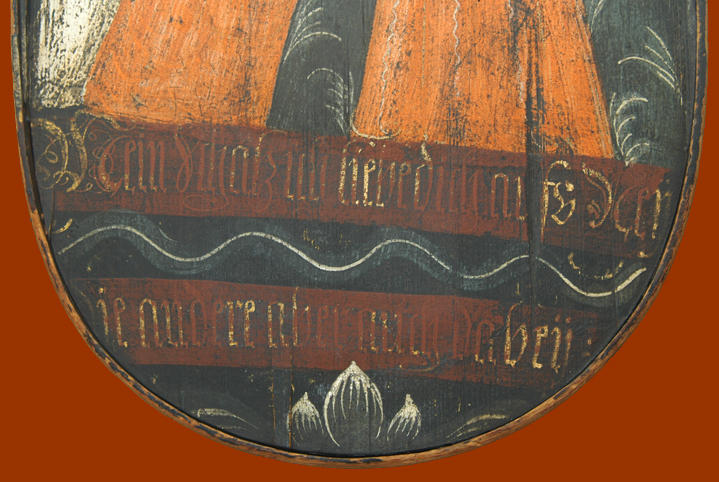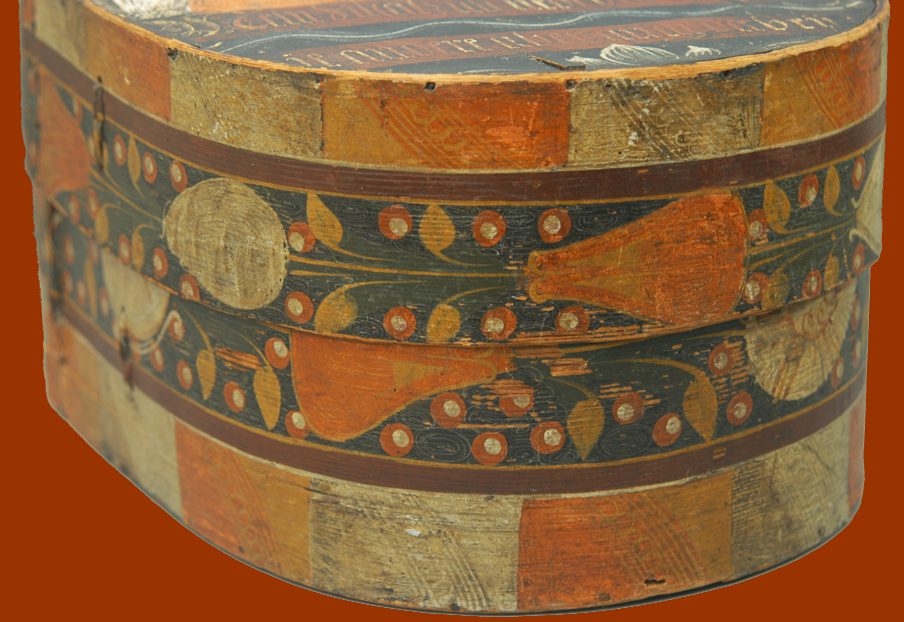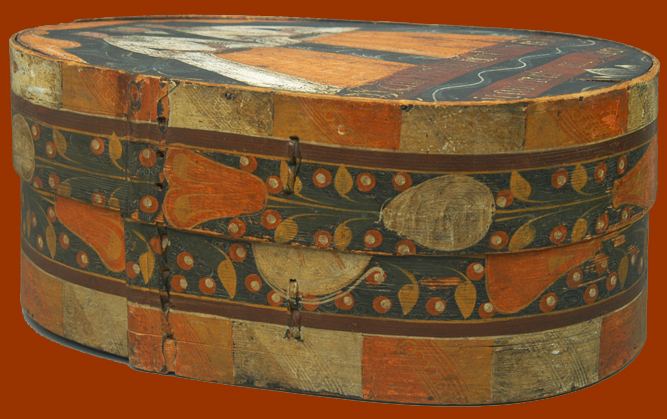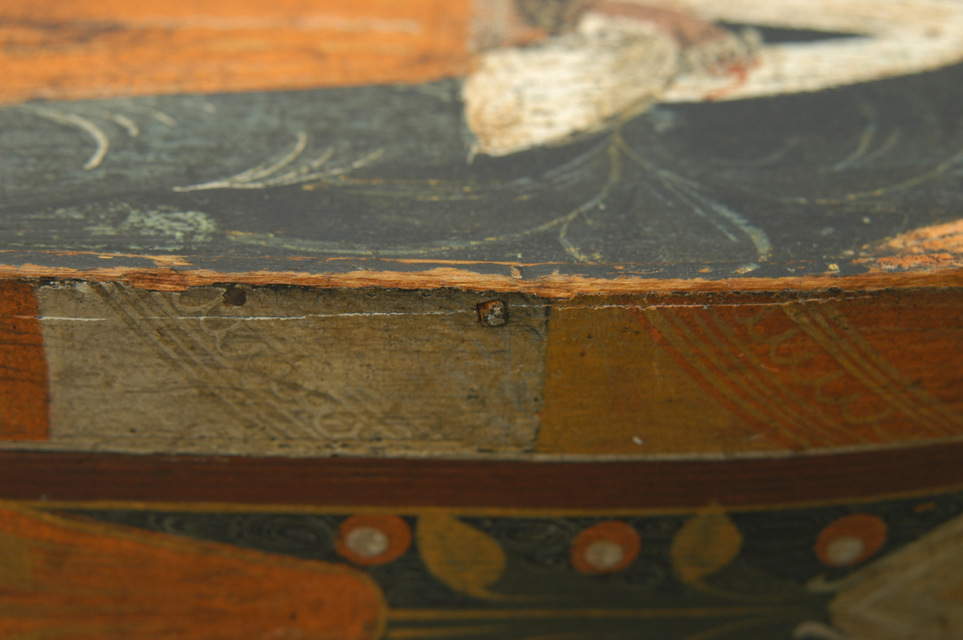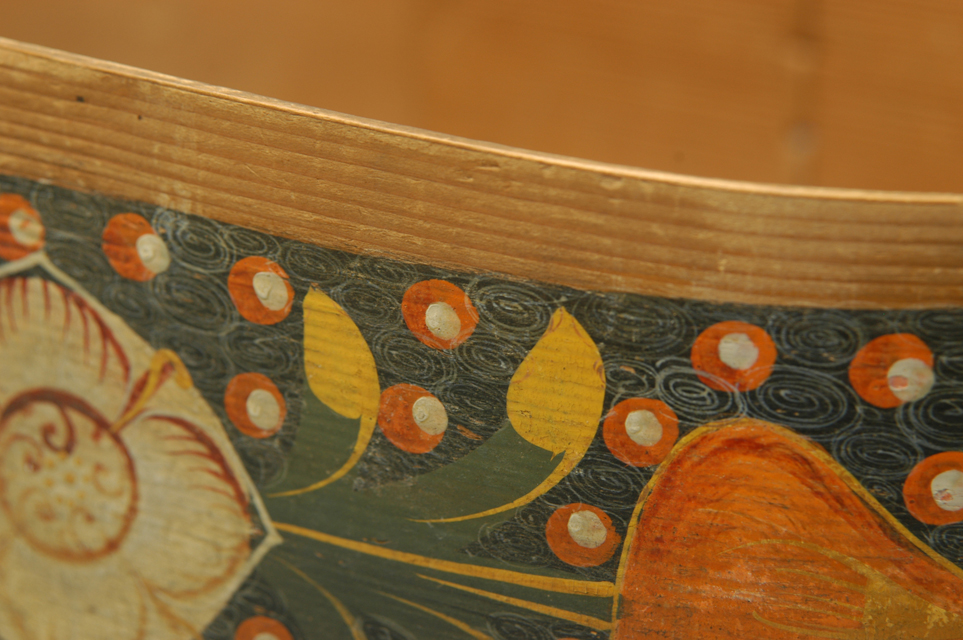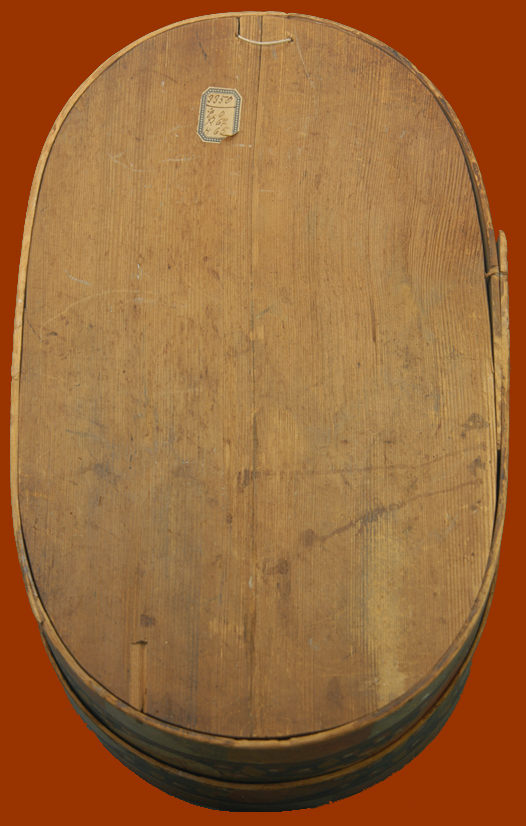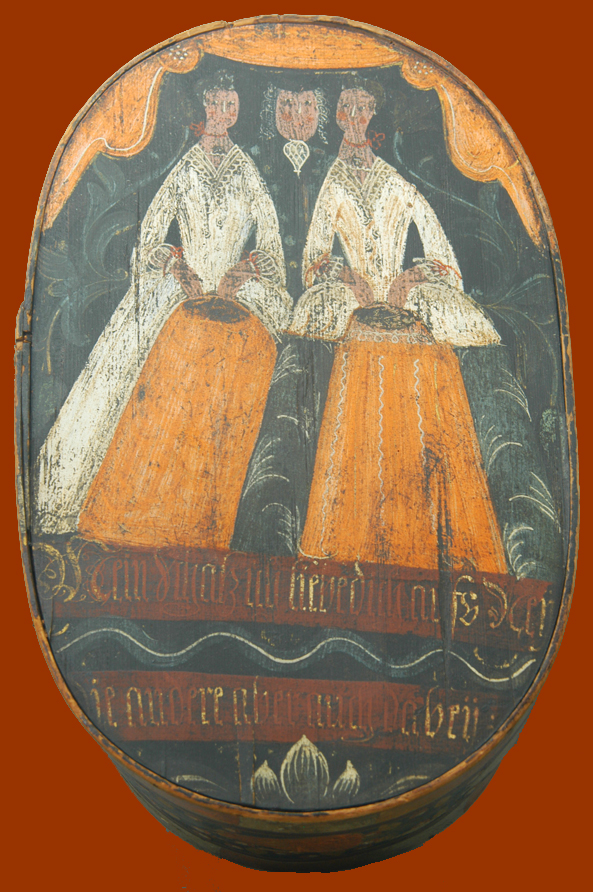
Wonderful and becoming exceedingly hard to find, this late 18th to early 19th century box is what is commonly called a bride's box and more correctly called a spanschachteln. Schachteln means boxes and span means wood shavings. These beautiful oval, paint decorated boxes were made in Germany, Austria and Switzerland in the 18th and 19th centuries and often brought to America by European immigrants. These boxes were often given as a bridal gift but they were also served for storage of wigs, hats, Christening gowns, documents and even supplies for physicians. Making these boxes became quite a cottage industry in the Bavarian regions, often with the boxes being constructed by one family and then sent to a schachtelmaler, or box-painter, for decoration.1
This top of this stunning box is decorated with the figures of a gentleman and two young women. Although I cannot read the inscription (in fact, I can't even make out most of the letters of the flowing Old German script), my speculation is that the gentleman is flanked by his two daughters. The background of the top is black with dark vermillion, white, and bright orange. The sides are decorated with blocks of white and orange along the edges with wonderful swirls throughout, a stripe of vermillion, then flowers or white, orange, red and yellow ochre twining along a black border. The black border has white swirls that add so much interest and excitement to the box.
The condition of the box is not perfect, but then, if it had been perfect, I would not have bought the box for fear of a fake (and there are many fakes or early boxes with new paint). I have taken so many detailed photos that I have put photos on three different pages! At the bottom of this page, you will find a link to page 2 and, from there, page 3. I'm trying to let you see all of the tiniest details but not overload your download time from the internet.
Condition issues are really minor for this box but here they are: The top has a break in the wood from the lower edge of the top to about 1 1/4" upwards. Please see the photo almost to the bottom of this page with a notation. There are some missing lacings on both the top and bottom pieces of the box (not at all unusual). There are a few missing wood pins and some missing edge wood from both the top and bottom (see photos on pages 2 and 3). From inside the box top, you can see that the edge has been glued to the top board at some time in the past. Thankfully, all of the glue has been removed, just leaving a residue that shows only from the inside. If you hold the top up to the light, you can see light around some of the edge where there is space from shrinkage. The bottom has a warp to just one corner of the bottom board. An early string loop is still attached to the bottom board and an old collection label is on the bottom. The bottom board has an age crack. All of these are minor issues with a box of this age--especially when you consider how beautiful and vibrant the paint decoration remains. The box measures 18" x 11 3/4" x 8" tall. I can be a bit taller or shorter, depending on how far you push the top. However, the farther down you push the top, the more you are likely to scrape paint from the sides and the harder it will be to open the box again.
This is a fantastic late 18th to early 19th century box!
(#5099) Sold
1 Lefko, Linda Carter, "Eye on Antiques: German Decorated Boxes", Early American Life Magazine, June 2004. 22.

